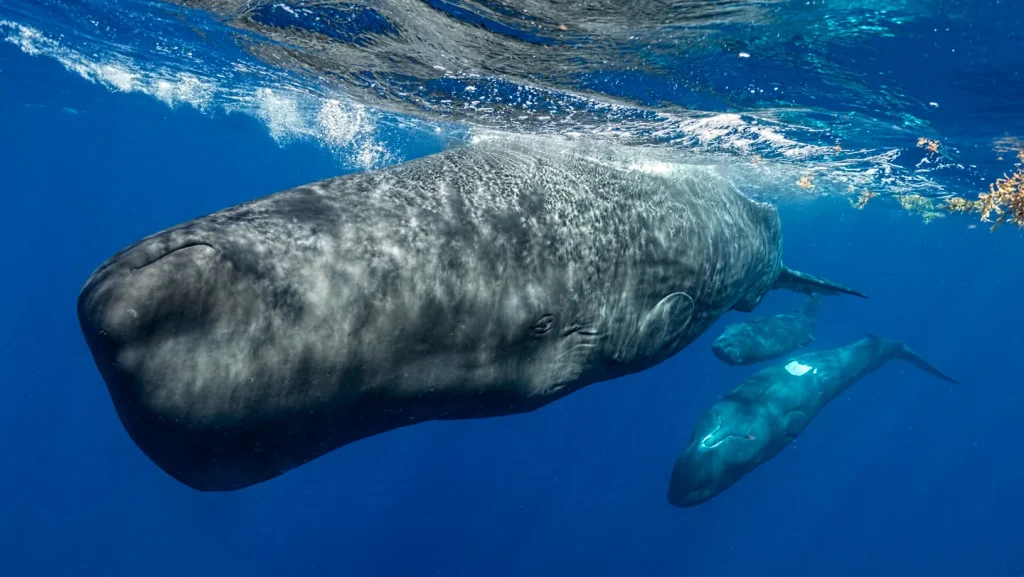The Symphony of Whale Communication: Clicks, Clacks, and Scientific Controversy
In the vast oceanic depths where human voices cannot reach, sperm whales have developed their own sonic language. These magnificent marine mammals communicate through distinct patterns of clicks known as codas – unique acoustic signatures that have long fascinated marine biologists. Recent research has potentially uncovered new depths to this underwater communication, suggesting that sperm whale vocalizations might be more complex and meaningful than we previously understood. However, this discovery has ignited a passionate scientific debate about what these sounds truly represent.
Marine biologists have long recognized that sperm whales use sophisticated clicking patterns for communication. These patterns vary not only in number but also in timing, creating identifiable acoustic signatures that can even distinguish between different whale clans. Off the coast of Dominica in the eastern Caribbean Sea, researchers have documented sperm whales using a specific pattern of “click…click…click-click-click” – two slow clicks followed by three rapid ones. This pattern serves as a sort of acoustic identifier for their particular clan, functioning somewhat like a dialect in human language.
Project CETI (Cetacean Translation Initiative), a nonprofit organization dedicated to understanding whale communication, has taken this research a step further. Using artificial intelligence and advanced linguistics analysis, researchers like marine biologist Shane Gero and linguist Gašper Beguš discovered that these click sequences sometimes have a distinctly different sound quality – more of a “clack…clack…clack-clack-clack.” This subtle but significant variation might represent a previously unrecognized layer of meaning in sperm whale communication. Beguš, from the University of California, Berkeley, even suggests that sperm whales might use clicks and clacks “in a similar way as we use our vowels to transmit meaning,” though this particular comparison has proven controversial among other researchers.
The research methodology behind this discovery reveals the innovative approaches scientists are using to decode animal communication. The team employed a sophisticated AI system called a generative adversarial network (GAN) to analyze whale codas. One part of this system learned to recognize real sperm whale codas from data, while another part created invented codas and attempted to make them realistic enough to “fool” the first part. Through this process, the researchers discovered that frequency manipulation was a critical element in creating convincing synthetic codas. This led Beguš to focus on studying the frequencies of real codas, using techniques borrowed from human linguistics. Perhaps most ingeniously, he removed the spaces between clicks in recordings, allowing human ears to more easily distinguish between “click” and “clack” types of sounds that might otherwise be imperceptible to us.
Not all marine biologists are convinced by these findings, however. Luke Rendell from the University of St. Andrews, who has over three decades of experience studying sperm whales, strongly disagrees with the vowel comparison, calling it “completely nonsense.” He points out that each sperm whale click actually consists of multiple tones in sequence, which can create ripple effects in recordings that might be mistaken for the patterns CETI researchers identified. His concern is that these patterns could be recording artifacts rather than meaningful communication elements. Similarly, Denise Herzing, who has studied dolphin communication for more than 40 years, cautions against using terminology like “vowel” that might lead people to make unfounded assumptions about similarities between whale communication and human language. She recalls how exaggerated claims about dolphin abilities in previous decades severely hampered legitimate research in the field.
Despite these criticisms, there’s general agreement that the research approach itself has merit. Herzing acknowledges that the study takes “a novel look at sperm whale communication using a technique that hasn’t been used before,” and that the newly identified pattern is “well worth exploring.” Stephanie King of the University of Bristol offers another perspective, suggesting that the patterns might simply reflect different states of arousal or alertness in the whales rather than conveying specific meanings. This would align with similar patterns observed across many animal species that indicate emotional states rather than serving as language elements.
Project CETI continues its important work, gathering data on when and where whales produce different types of codas and what activities they’re engaged in during these vocalizations. As we delve deeper into the mysteries of cetacean communication, we’re reminded that understanding other species requires not just sophisticated technology but also a willingness to consider forms of communication fundamentally different from our own. The ongoing debate among marine biologists exemplifies the scientific process at its best—a continuous dialogue of discovery, skepticism, and refinement that gradually brings us closer to understanding the rich communicative lives of these extraordinary marine mammals.


